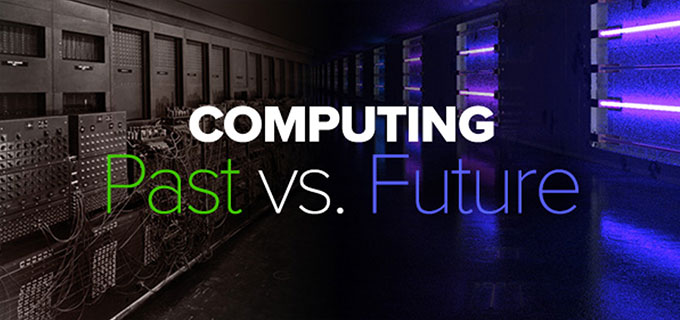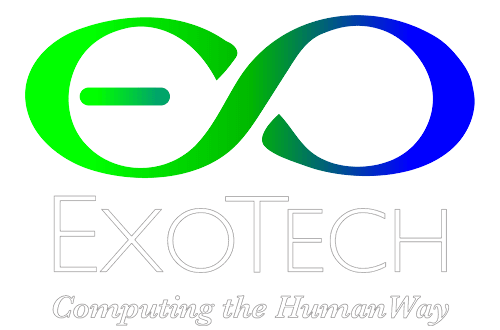
Marketing the ExoBrain: The Secret Weapon
You know, marketing is pretty simple stuff – you want to sell something to someone, so you make the thing look attractive and they will buy it.
Except, that’s not entirely true. In fact, it’s actually backwards thinking. Let me explain.
There have been a number of huge product successes in the last fifty years; successes, that is, in terms of the explosive growth of product sales. Ebay, Amazon, Facebook and the IBM PC are some examples of this. But there was a major difference with one of these, compared with the others.
Ebay, Amazon and Facebook were brilliant ideas that coincidentally happened to match some existing market needs and, as a result, took off like rockets. But I will guarantee you that there were also many (perhaps even thousands) of other equally brilliant ideas that did not take off, because they did not meet any existing market need. So those ideas are all still languishing in the patent office and will probably never see the light of day.
But what about IBM? They had a different approach. They did not come up with the idea of selling a small, desktop computer that any manager could operate. They started with a market need and built a solution to that.
The IBM PC was released in 1981. I was lucky enough, at the time, to be directly involved with that release. So, let’s look at what happened. Computers had only really come into their own in the commercial world through the 1970s. They were around in the ’60s, but were limited to specialized uses, like managing the NASA flights to the moon. But computers did not really get into the business world until the early ’70s.
And, by the end of the ’70s, an interesting thing had begun to happen. Computers, at the time, were huge beasts that were kept in large, air-conditioned rooms and lorded over by zealous groups of caretakers, the IT professionals. But the technology at the time was such that, if you, as a manager, wanted to use those computers, you had to go through the IT professionals who had total control over how they were used.
Today, of course, if you want a report of the company’s sales in your state, you can probably get that pretty easily yourself, without having to ask the Computer Department to prepare such a report. But in the late ’70s, it could take several months to get such a report. Firstly, it was not that easy to do and, secondly, the computer departments traditionally had huge backlogs that meant you had to wait.
Now, there is more to this story than that, but let’s isolate this as a way of explaining the difference between the “stumble marketing,” as Peter refers to it in our Business Plan, and the brilliant marketing strategy that one man applied to the IBM PC.
His name was Don Estridge, by the way, and he had an amazing insight into how a product should be marketed. He saw a problem in the way that computers were being used in the business world. There were many of these problems, as I said, but just look at this one: it took three months to get a simple report (or even a view) of the company sales for a particular state. So, he set about finding a solution to that. He didn’t start with an idea to build a small computer. He started with a real-life problem – the current systems were too unwieldy; too cumbersome; too slow.
His solution was to build a small computer that could be used by managers directly. It would sit in their own offices – not in the ivory tower of the computer room. It would be something that the manager, or his/her personal assistant, could use to manipulate data right there and produce whatever reports were needed right then. Not is three months’ time.
Now, Don Estridge did some other brilliant things to make it easier to get the IBM PC out the door and onto managers’ desks around the world. But just looking at this one, to do with how long it was taking to get access to computing power, was brilliant from another standpoint. It was based on his identifying a problem and then coming up with a solution to that problem. Not only that, but he also built these new computers using what was needed by managers.
And that’s the secret weapon I mentioned in the title of this little talk. The ExoBrain will be built by the technical staff who will know how to put all the bits and bytes together properly, so it will actually work. But the design and function will be based on what people want the system to do in the way they want it done.
Let me say that again, a different way. The ExoBrain’s functional design and the way in which it will operate in its relationship to the users, will be based on the results of surveying the future users on what is actually needed and wanted.
The IBM PC was built by technical people who knew how to put together all the technical bits to make it work. But the way it worked was based on finding out how people wanted to use it. This is marketing at its best.
In the case of ExoBrain, we have already established that there is a tremendous problem associated with computing today – illustrated blaringly by the fact that 50% of the world does not have access to computers, and of those who do, only about 10% are using them for anything more than email and Internet browsing. And, worse still, the 10% who do use more programs and functions are only using about 5% of the power of those programs. The computing industry is in a mess.
So, we know the problem – computing is too complex and 90% of people are not even using it to any degree at all. And it’s getting worse every year.
And we have the solution – a computing platform where the computer manages data in the same way that humans do and can interact with humans in the same way that other humans do. So now you will be able to make a computer do what you want it to do, without having to become a total technical expert first. Wow! What a solution!
But further to that. we plan to make sure that the ExoBrain is based on real-world functional requirements and on the actual needs of the end users. And how will we do that? The answer is surveys that will clearly define exactly what end users need; so the Marketing Division can then guide the Production Division on what it is, exactly, that they should build.
And that’s the secret weapon. Marketing finds out exactly what is needed and tells Production what to build.

